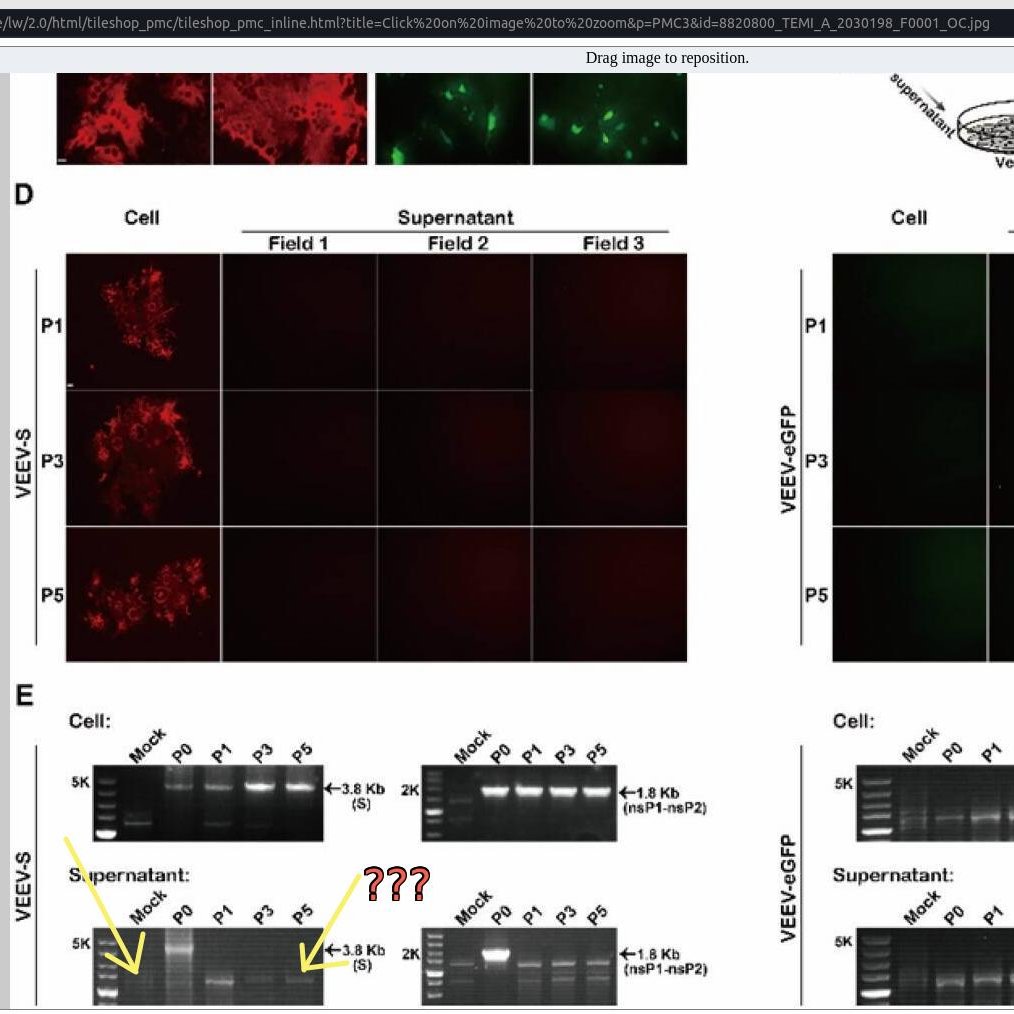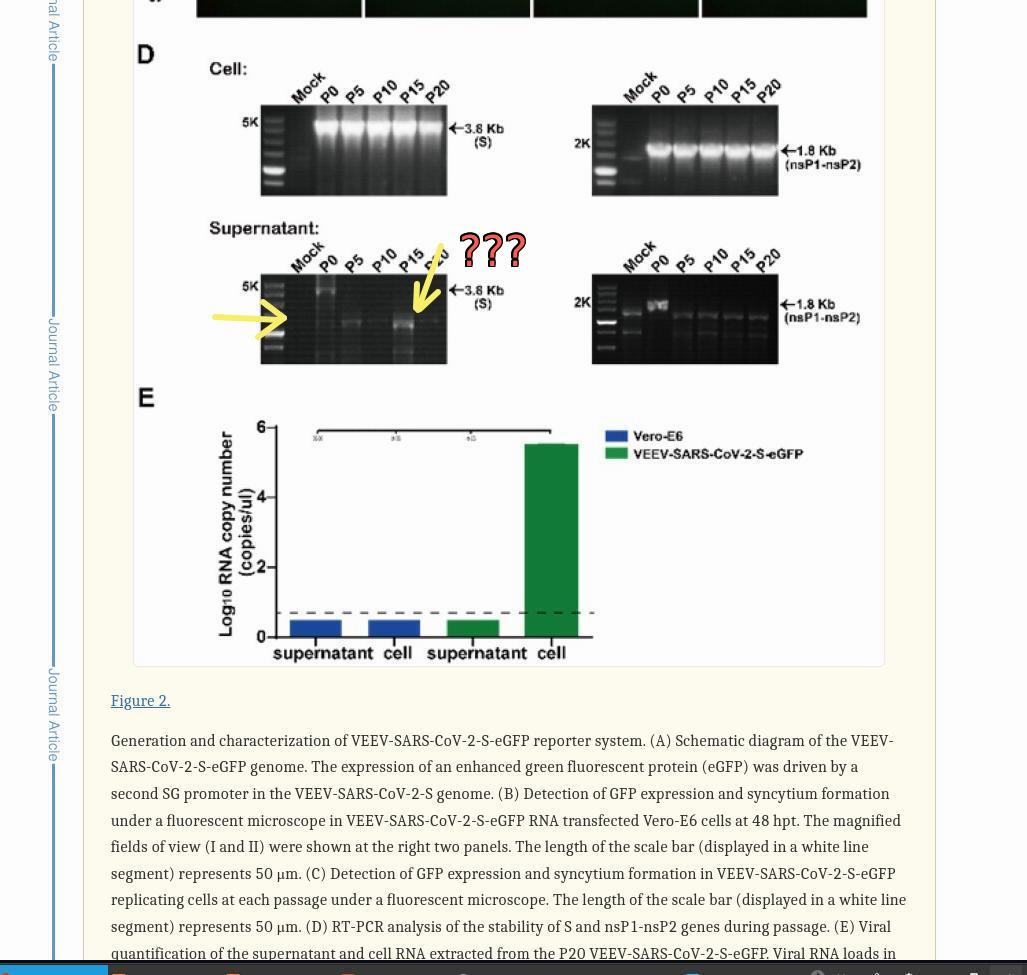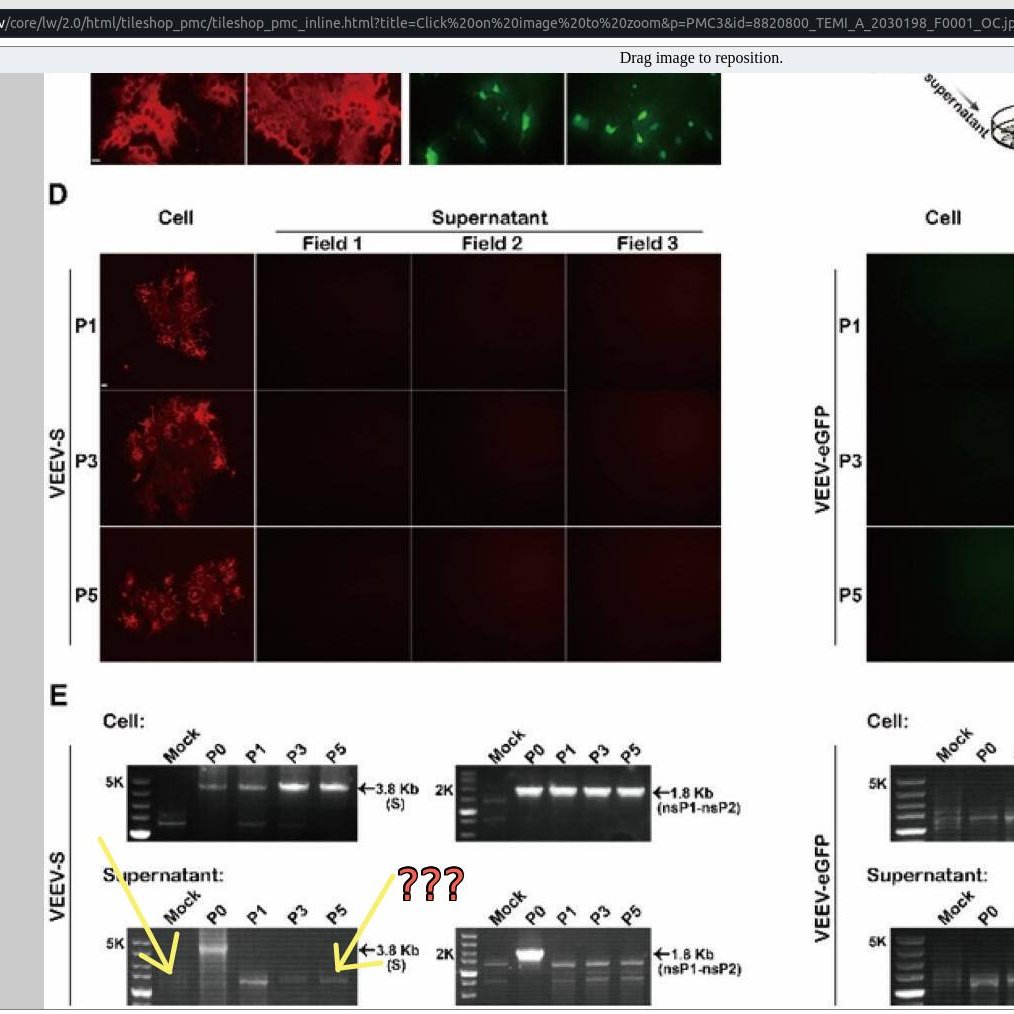…An unknown gene shows up on PCR from the liquid surrounding Replicon infected cells. It appears weakly after 5 generations, very faint after 10 generations, strongly after 15 generations and then almost gone after 20 generations. They don't mention in 1/2ncbi.nlm.nih.gov/pmc/articles/P…
They do not sequence this unknown gene that shows the most copies after the 15th generation and then mostly disappears. Is it a partial spike protein gene that would make their conclusion that Replicons can transfer partial genes from just the fluid around Replicon cells ? 1/3
This is Figure one from the paper above. It shows a mystery gene smaller than the spike gene show up in the first generation. There's no mystery gene in the control. The mystery gene gets fainter in the 3rd and 5th generation. (Fewer copies) 2/3 

In figure 2 D, this gene has few copies 5 generations after the cell was exposed to Replicon fluid; very few copies at 10 generations; suddenly massive copy number at 15 generations; and then mostly silent again at 20? A Replicon gene with variable copy capabilities might do this 

@ItouKino 何でもあり得ますが、サイズが非常に一貫していることはわかっています。 可変コピー率 RdRP によって、隠れて断続的に再発現する遺伝子を作成することは、非常に高度な遺伝子工学です (意図的である場合)。
2/2
2/2
@ItouKino The unknown gene is copied repeatedly in the Vero cells exposed to Replicon cell fluid. Was it copied by the Replicon gene making RdRP inside the new cells? If so this means Replicon spread from fluid alone. The other possibility is the new cells copied the gene by themselves 2/3
@ItouKino New cells copied without Replicon copy gene. If the PCR used only spike gene primers; how did the new cells get a partial copy of the spike protein gene from the Replicon cell fluid alone? If partial spike can be transferred by fluid then so can partial Replicon copying genes.3/3
• • •
Missing some Tweet in this thread? You can try to
force a refresh






